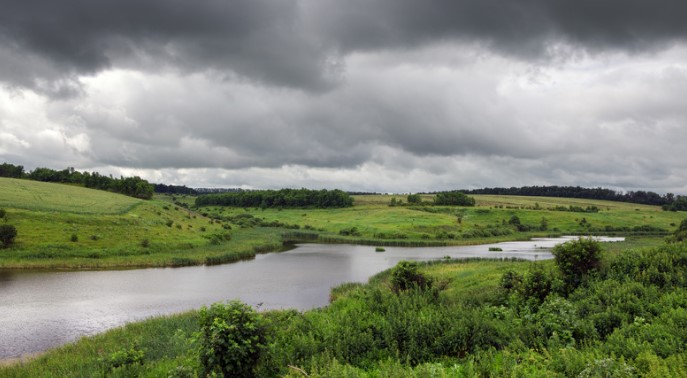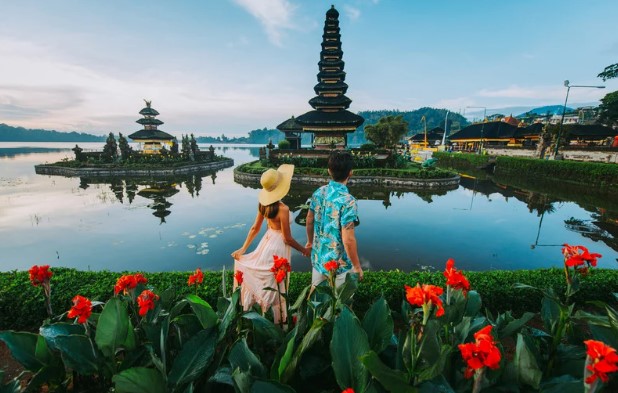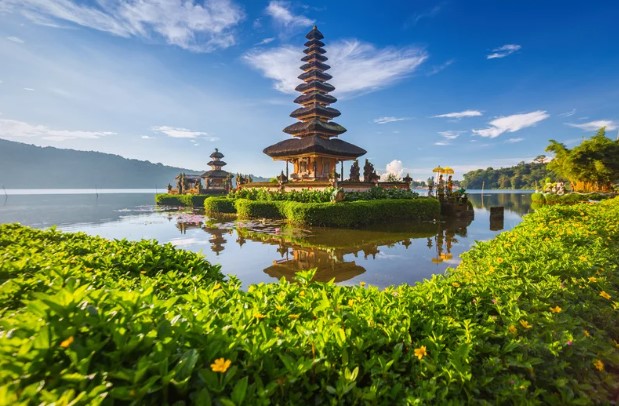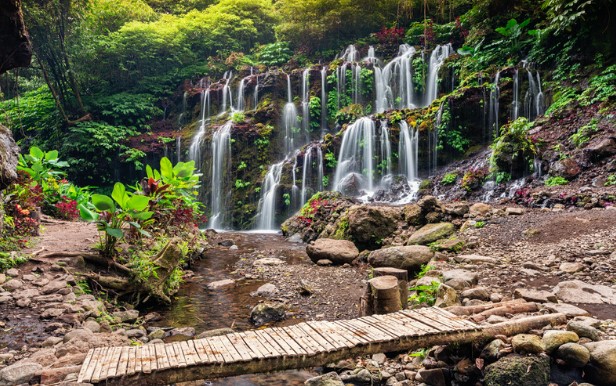
Bali is a stunning volcanic island known worldwide as a tropical paradise, drawing millions to its beautiful beaches, vibrant culture, and thrilling nightlife. It’s no secret that your experience in Bali can change drastically based on when you decide to visit. That’s why understanding the worst time to travel to Bali can make all the difference for your dream vacation.
The Peak Tourist Season: December to January
Imagine stepping onto one of Bali’s pristine beaches, like Nusa Dua, only to find it buzzing with tourists worldwide. December to January marks the peak tourist season, and with it comes a flood of visitors, making popular tourist spots like the Monkey Forest and Kelingking Beach feel a tad too crowded.
Accommodation prices soar during these months. Those dreamy top-rated hotels and beach resorts that you’ve been eyeing? Their prices often skyrocket, making it a challenging time for the budget-conscious traveler. On the bright side, the holiday season brings a unique charm. The festive season, especially around the New Year, attracts international tourists and locals, all eager to bask in Bali’s celebratory spirit.
However, there are pros and cons of traveling to Bali during the peak of tourism. On the one hand, you’ll witness the island’s festive glory, with events like the Nusa Dua Light Festival lighting up the night. On the other hand, the influx of tourists means crowded months ahead, potentially dampening the allure of Bali’s quieter spots and lush landscapes.
In conclusion, while Bali’s beauty remains undiminished, the timing of your trip can greatly influence your experience. Being aware of the busiest times, like the peak tourist season, can help you make an informed decision and enjoy an unforgettable stay in this tropical haven.
The Rainy Season: October to March – Is This the Worst Time to Travel to Bali?
Bali, with its tropical climate, boasts a year-round destination appeal. However, there’s a catch: the rainy season. Lasting from October to March, this wet season sees frequent rainfall, which may dampen your travel plans.
This season paints the island in lush greenery, transforming rice terraces and fields into a vibrant green landscape. However, the heavy rain can lead to complications. Flooding has become common, and areas like Nusa Penida can sometimes become difficult to traverse. Travel cancellations, especially boat trips to Nusa Lembongan or Raja Ampat, have become more frequent. Moreover, you’re keen on outdoor activities, like scuba diving or exploring the rice paddies. In that case, the rainy months might limit your options.
Still, there are silver linings for those who embark during this wet weather. Hotel prices often drop, offering deals on hotels, and the island is less crowded. Plus, some rain can be quite refreshing amidst the warm temperatures! If you venture during this period, packing wet weather gear and checking the weather forecast becomes essential. Indoor activities, like diving deep into Balinese culture or visiting indoor markets, can also offer a unique experience.
Nyepi Day (The Day of Silence): A Unique Balinese Experience
Have you ever heard of a day when an island comes to a standstill? That’s Nyepi, Bali’s Day of Silence. Celebrated once a year, this day marks the Balinese New Year and is deeply rooted in ancestral spirits and traditions.
On Nyepi, the usual bustle of Bali fades away. The airport shuts down, streets remain empty, and even the beaches see no visitors. It’s a day of reflection, where even tourists are expected to stay indoors and respect the local customs. No lights, no work, and no loud noises.
While it offers a unique cultural insight for travelers keen on experiencing the authentic Balinese culture, it can be quite a surprise if you need to be made aware. Imagine being in your hotel with no option but to step out or explore the beautiful islands. Hence, if you’re planning a trip around this period, it’s crucial to check the date for Nyepi and prepare accordingly. It’s an immersive experience but can disrupt travel plans if caught off-guard.
While Bali’s allure remains evergreen, certain times, like the rainy season or Nyepi, might pose challenges. It’s always best to be informed, ensuring your trip to this tropical paradise is perfect.
School Holidays: Busy Times Ahead for Bali?
One key factor travelers often forget when picking the worst time to travel to Bali is the school holidays in Bali’s primary tourist sources. Did you know Bali witnesses a surge of tourists, especially from countries like Australia and China, during their school breaks?
In Australia, school holidays usually occur in late December to late January, early April, late June to mid-July, and late September to early October. Meanwhile, China’s significant school breaks happen during the summer months of July and August and the winter break in January and February. When students get a break, families flock to nearby destinations for tourists. Bali, with its beautiful beaches and vibrant culture, tops the list.
What does this mean for the average traveler? Well, you guessed it – the influx of tourists means popular destinations, even the usually quiet spots like Nusa Dua or Tanjung Benoa, can get crowded. Plus, with increased demand, prices for accommodations can shoot up. So, suppose you’re looking for cheaper prices and fewer crowds. In that case, you might want to double-check the school holiday calendars of these countries before setting your travel dates.
The Unpredictable Mount Agung: Bali’s Sleeping Giant
Bali isn’t just beaches and rice terraces; it’s also home to Mount Agung, an active volcano. While it offers breathtaking views and attracts those seeking adventure, its unpredictable nature poses challenges. In recent years, eruptions from Mount Agung have led to flight delays and cancellations. Usually clear and sunny, the sky becomes a canvas of ash clouds.
The potential for future eruptions always looms, making it essential for travelers to stay updated on its activity if you’ve planned an outdoor adventure, like a day trip to the rice fields or water sports, the volcanic activity might put a damper on your plans.
One crucial tip for those with Bali on their travel goals is to consider travel insurance. Especially when Mount Agung shows signs of activity, having travel insurance can be a lifesaver. Ensure your insurance covers natural disruptions, allowing you to reschedule or even cancel if Mother Nature decides to show her might.
In conclusion, while the tropical paradise of Bali promises an unforgettable experience, factors like school holidays and the temperamental Mount Agung can add unexpected twists. Being aware and planning accordingly ensures your Bali adventure goes off without a hitch.
Travel Infrastructure and the Strain of Overwhelmed Destinations
Suppose there’s one thing Bali is known for besides its natural beauty. In that case, it’s the influx of tourists eager to experience this tropical island paradise. However, when is the worst time to travel to Bali if you’re hoping to avoid overcrowded spots and transportation hassles?
Destinations like Kelingking Beach, Monkey Forest, and the famous rice terraces magnetize visitors. These hotspots become too packed during peak tourist season and popular vacation times. This not only affects the enjoyment of your trip but poses challenges to local transport. Imagine booking a ride to Nusa Dua or navigating the roads to Nusa Penida during the busiest times – it can be quite a task!
Moreover, this constant influx has another side effect: an environmental strain on Bali’s natural wonders. The pristine beaches, lush landscapes, and even the waters housing vibrant marine life face increased plastic waste and pollution threats. It’s a reminder that while Bali welcomes tourists, the island’s health is paramount.
Alternative Travel Windows: Bali’s Hidden Treasures
So, when should you visit to escape the crowds but still bask in sunny weather and beachy temperatures? Enter the shoulder months. These are periods just before or after the peak season. In Bali, April to June and September are excellent times to explore the island.
Why might this be the ideal time for your dream vacation? Firstly, fewer crowds mean popular tourist destinations feel more intimate. Enjoy a sunset at Kelingking Beach or explore the rice paddies without feeling rushed. Secondly, off-peak travel often means better deals on hotels and even activities. Affordable accommodation prices have become more common, giving budget-conscious travelers relief.
But the most enticing reason is the more authentic experience. With fewer tourists, interactions with locals become more personal, allowing deeper insights into the Balinese culture and traditions. The atmosphere feels relaxed, connecting you with the tropical paradise around you.
In summary, while Bali is undoubtedly a year-round destination, being strategic about when you visit can offer a richer and more enjoyable trip. Whether avoiding the challenges of overwhelmed destinations or seeking a more genuine experience, the island has something for everyone at any time.
Bali’s Hidden Gems and Off-the-Beaten-Path Adventures
While Bali’s mainstream attractions garner the lion’s share of attention, the island is peppered with lesser-known treasures waiting to be explored. Venturing into these can provide solace from the bustle of the busy times.
Secret Waterfalls: Beyond the well-trodden paths lie waterfalls like the Sekumpul or the Tukad Cepung. Hidden amidst dense jungles, reaching these involves trekking through Bali’s lush landscapes. Here, you’re greeted by nature’s symphony, away from the tourist crowds.
Traditional Villages: Dive deeper into Balinese culture by visiting villages like Penglipuran. Known for its preservation of the traditional Balinese lifestyle, you’ll witness customs and daily life untouched by modernity. Engage with locals and learn the art of Balinese weaving or wood carving.
Eco-Friendly Travel in Bali: A Responsible Approach
Bali’s beauty, while enduring, needs protection. With rising environmental concerns, many travelers now opt for sustainable practices.
Eco Resorts: These accommodations prioritize environmental conservation. Built with natural materials and often using renewable energy sources, they provide a luxurious yet eco-friendly stay. Moreover, they often sit in serene locations, offering breathtaking views of Bali’s green landscape or pristine beaches.
Responsible Tours: From guided treks that teach about local flora and fauna to workshops showcasing traditional crafts, these tours entertain and educate. They’re a way to give back, as they often support local communities and conservation efforts.
Bali’s Culinary Delights: Beyond the Usual
Sure, everyone talks about Bali’s beaches and temples, but its culinary scene is equally riveting. Venturing beyond the mainstream eateries can lead to delightful discoveries.
Local Markets: Places like Ubud’s morning market are a sensory overload. From tropical fruits to traditional snacks, it’s a chance to taste authentic Balinese cuisine. Don’t miss out on trying “Lawar” or savoring the sweetness of “Dadar Gulung.”
Beachside Warungs: Often, family-run small eateries dot Bali’s coastline. Here, you can relish freshly caught dishes like grilled fish, accompanied by the sounds of waves and sunset views.
Incorporating Wellness into Your Bali Stay
Beyond adventures, Bali offers rejuvenation. The island has seen a surge in wellness retreats and yoga centers.
Holistic Retreats: Places like Ubud are hubs for wellness retreats. These centers offer detox programs, meditation sessions, and organic meals, ensuring travelers return home refreshed.
Yoga with a View: Imagine practicing yoga overlooking rice fields or on a sea cliff. Bali’s unique locations elevate the yoga experience, making it not just about physical well-being but also soulful rejuvenation.
While Bali offers famed attractions and experiences, delving deeper can lead to unique stories and memories. Whether through eco-travel, culinary adventures, or wellness retreats, the island promises diverse experiences for every traveler.
Bali’s Temples: The Spiritual Odyssey
Beyond the famed Uluwatu and Tanah Lot, Bali has numerous temples that resonate with spiritual energy and historical tales.
Besakih Temple: Known as Bali’s ‘Mother Temple,’ this majestic temple complex sits on the slopes of Mount Agung. Its unique architecture and sacred aura provide insights into the island’s religious tapestry.
Tirta Empul: This temple is renowned for its holy spring water, where devotees take purifying baths. The rituals and ceremonies here are a testament to Bali’s vibrant culture.
Balinese Arts and Performances: A Timeless Journey
The artistic soul of Bali is more than just its art markets or souvenir shops. It pulsates through its traditional dances, music, and theatre.
Legong Dance: A classic Balinese art form, the Legong dance, with its intricate movements and expressive gestures, tells captivating stories of the island’s folklore.
Wayang Kulit: Shadow puppetry, an ancient form of storytelling, is a must-experience. Narrating myths and legends, this art form is both entertaining and enlightening.
The Adventure Beyond the Beaches
While Bali’s beaches are undeniably enchanting, there’s more for the thrill-seeker.
White Water Rafting: The Ayung River provides an adrenaline-packed journey. Navigating its rapids surrounded by lush greenery is exhilarating.
Jungle Treks: Exploring the island’s dense jungles is rewarding. You’ll encounter hidden waterfalls exotic wildlife, and get a glimpse of the vibrant flora that dresses Bali.
Bali’s Traditional Markets: A Riot of Colors and Flavors
Beyond the beachside stalls, Bali’s traditional markets offer an unfiltered view of its daily life.
Pasar Badung: Located in Denpasar, this is the largest market in Bali. From aromatic spices to hand-woven baskets, it’s a shopping experience like no other.
Kumbasari Art Market: Here, artisans showcase their crafts, including intricate silver jewelry, hand-carved sculptures, and traditional fabrics. It’s an art lover’s paradise.
Learning from the Locals: Workshops and Classes
Bali’s residents are always eager to share their skills and knowledge with visitors.
Balinese Cooking Classes: Delve into the secrets behind Bali’s delicious dishes. Learn about the spices, techniques, and traditions of local chefs.
Traditional Craft Workshops: Engage in hands-on wood carving, batik painting, or silversmithing sessions. Not only do you learn a new skill, but you also get to understand the passion and history behind each craft.
Conclusion: Making the Best of Your Bali Adventure
Bali, with its dreamy beaches and vibrant culture, is a top-rated destination for tourists worldwide. But unlocking its magic is more than picking the right season or finding the cheapest time to visit. The secret lies in being a well-informed traveler.
Before packing your bags, it’s wise to peek into Bali’s weather forecast. No one wants to be caught off guard in the rainy season when they’ve packed for sunny weather. But did you know there’s more to Bali than just its climate? Events like Nyepi Day (The Day of Silence) can offer a unique cultural experience. Still, they can also mean changes in your travel plans, like flight delays.
School holidays in places like Australia and China can affect Bali too. These holidays bring a rush of tourists to the island. If you’re hoping for a quiet spot by the beach, think twice about your travel timing.
Then there’s the majestic Mount Agung. Its unpredictable nature can be both a wonder and a challenge. Knowing its activity can save you from unexpected hiccups during your trip. And while on the topic of challenges, always remember to check on local transport during the island’s busiest times. No one wants to miss a day trip to Nusa Penida or a dive in Raja Ampat due to transport woes.
But being informed is about more than just dodging logistical challenges. It’s also about deep respect. Bali is a tropical paradise but also home to the Balinese people. Respecting local customs, whether during a temple visit or while exploring the rice terraces, ensures you leave a positive footprint behind. This also extends to the environment. The beautiful islands and lush landscapes we adore need protection. As visitors, we must travel sustainably. Whether by reducing plastic waste or supporting eco-friendly businesses, every small act counts.
In the end, a trip to Bali is what you make of it. With the right information and a heart full of respect, it can be an adventure of a lifetime. And always remember, as you navigate Bali’s peaks and pits, the worst time to travel to Bali is when you need more preparation. Safe travels, and cherish every moment in this tropical haven!










Pingback: Things to Do in San Antonio: An Unforgettable Sojourn
Pingback: US Virgin Islands vs Hawaii: A Detailed Paradise Comparison
Pingback: Best Time to Travel to Bali: Perfect Season for Island Bliss